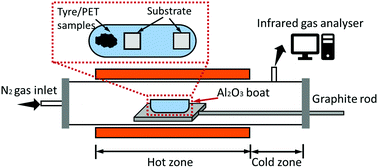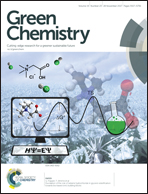Growth of NiO nanorods, SiC nanowires and monolayer graphene via a CVD method
Abstract
Green approaches for producing high purity advanced materials have always been a challenging task. Conventional methods for converting waste materials into char by heat treatment can have limitations in making defect free and pure materials for practical applications. Herein, we report a Green-Chemical Vapor Deposition (G-CVD) method to transform waste into functional materials in various forms by condensation of gases generated from waste on a chosen substrate. The flow of gases, mainly CO2, CH4 and CO, can be controlled via a regulated flow of a carrier gas and by controlling the temperature, gases can react/recombine on the substrate forming a crystalline lattice of semiconducting materials. Such a versatile green method can be sustainable and at the same time help in reducing the burden of landfill waste. We present how an appropriate control of the gas mixture resulting from the heat-treatment of waste rubber tyres and plastics leads to the growth of various types of functional materials on substrates. The growth mechanism of materials on substrates in this method is similar to the conventional CVD method. However, the utilization of waste to generate these gases adds the green and sustainable feature to this method and its high degree of reproducibility offers practical applicability. Once established for NiO nanorods, we tested the versatility of this technique to grow SiC nanowires, SiC nanoparticles and monolayer graphene. This highly reproducible G-CVD method of making advanced materials solely involves waste materials as the solid carbon source at atmospheric pressure without any other synthetic reagents.



 Please wait while we load your content...
Please wait while we load your content...